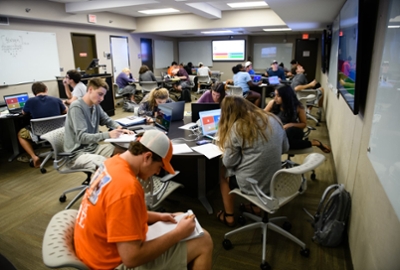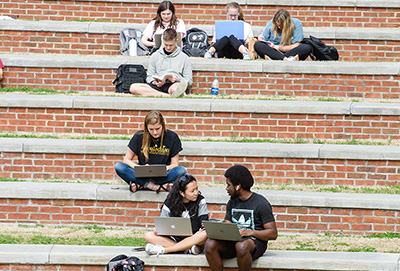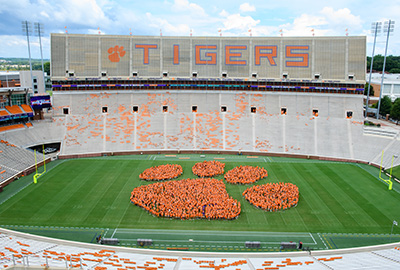Crossings, the Clemson University General Education Curriculum, integrates students’ intellectual development with their growth as thinkers and citizens, while both supporting and augmenting students’ major courses of study. This curriculum provides students with the tools to solve complex problems using varied approaches, adapt to changing circumstances, and make a positive difference in the world.

Why Crossings?
The Crossings model outlines three areas for the development of Clemson University undergraduate students: Communication, Ways of Knowing, and engagement with Global Challenges.
The model provides the academic structure whereby skills, knowledge and intellectual development acquired in the general education curriculum crosses with those in the major course of study. It is where theoretical knowledge crosses into engaged learning and practical applications. It is where students cross from novice to professional.
Communication
For students, faculty and employers, the ability to communicate effectively is always at the top of any list of desired skills. The Crossings curriculum includes a minimum of one course in Written Communication (3 credit hours) and one course in Oral Communication (3 credit hours).
Student learning outcome statement for Communication:
Students will demonstrate competence in communication through organization of a central message with supporting materials in the chosen medium.
Ways of Knowing
A general education curriculum should ensure learning across different disciplines and domains of knowledge. We describe this area as Ways of Knowing. Foundational study across epistemologies is an important component of developing higher order thinking skills. The Crossings curriculum has at minimum one course in Mathematics (3 credit hours), one course in Natural Sciences with Lab (4 credit hours), two courses in Arts and Humanities (6 credit hours, 3 hours of which focus on literature), two courses in Social Sciences (6 credit hours, selected from two different fields).
Student learning outcome for Mathematics:
Students will demonstrate mathematical literacy through interpretation of mathematical forms and performing calculations.
Student learning outcome for Natural Sciences:
Students will demonstrate the process of scientific reasoning through experimental activity and critical comparison of their results to those predicted by accepted natural science principles.
Student learning outcome for Arts and Humanities:
Students will analyze, interpret, and employ aesthetic, ethical, linguistic, and/or philosophical discourse in relevant contexts. -or- Students will create, perform, interpret, reinterpret, and/or criticize artistic works.
Student learning outcome for Social Sciences:
Students will use social science concepts and evidence to explain human actions or behaviors in the past, the present, and/or the future.
Global Challenges
Global Challenges represent significant concerns faced by multiple populations around the world. In exploring Global Challenges within courses, we are helping our students reinforce learning in critical thinking, evaluation, and ethical analysis. The Crossings curriculum includes 6 credit hours in Global Challenges.
Student learning outcomes for Global Challenges area:
- Students will demonstrate critical thinking through analysis of global challenges.
- Students will evaluate how varying perspectives influence global challenges.
- Students will demonstrate the integration of ethics into an analysis of global challenges.
(Each Global Challenges course incorporates at least two of the three student learning outcomes.)




